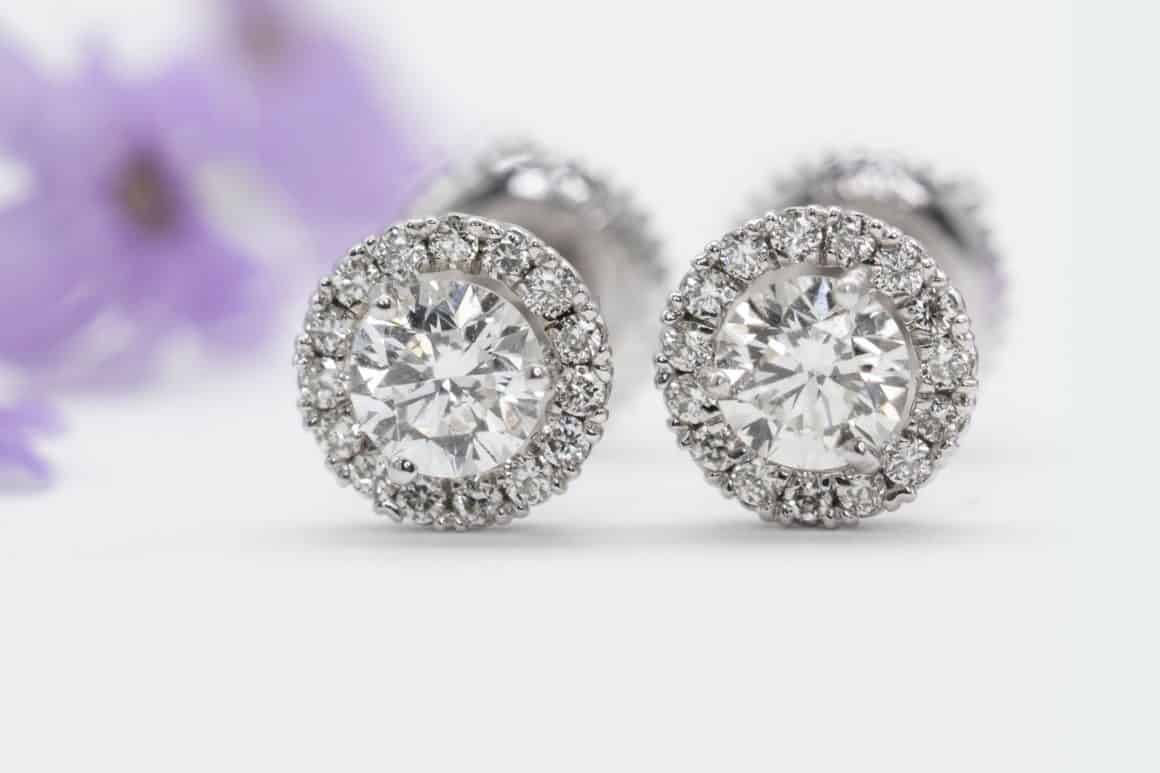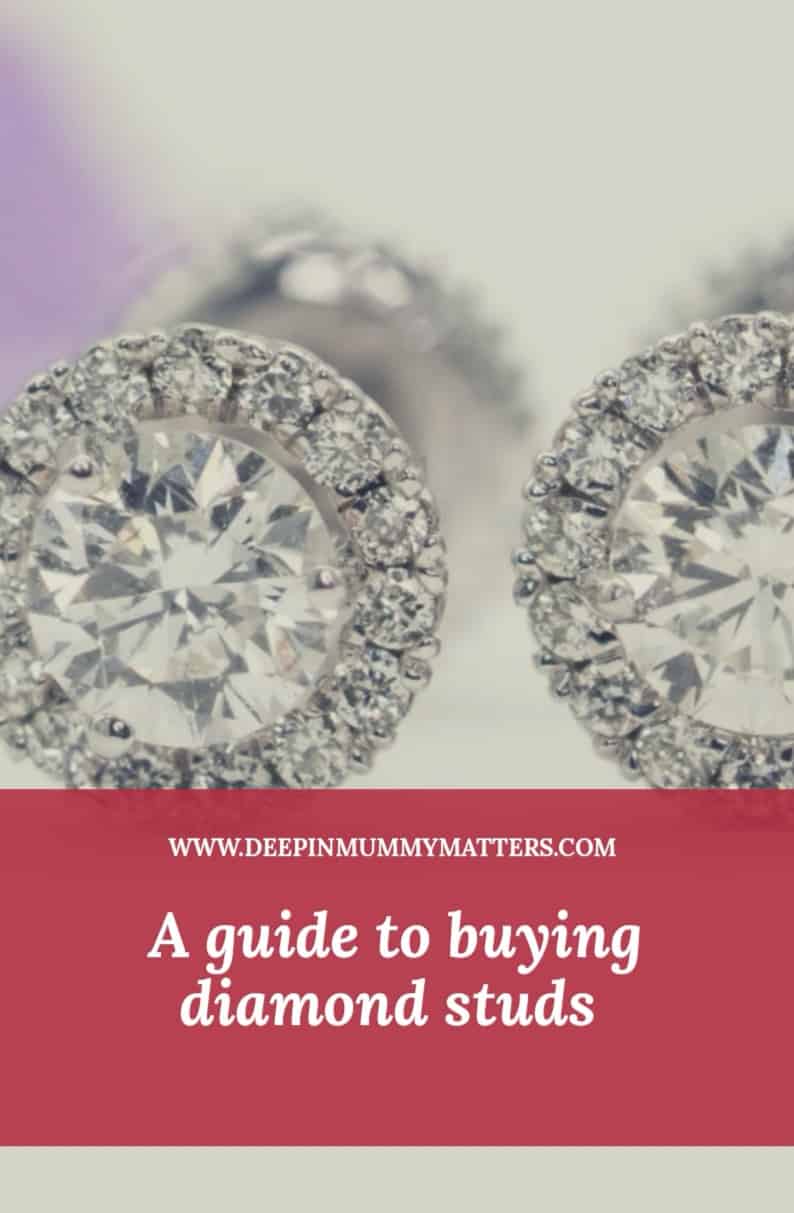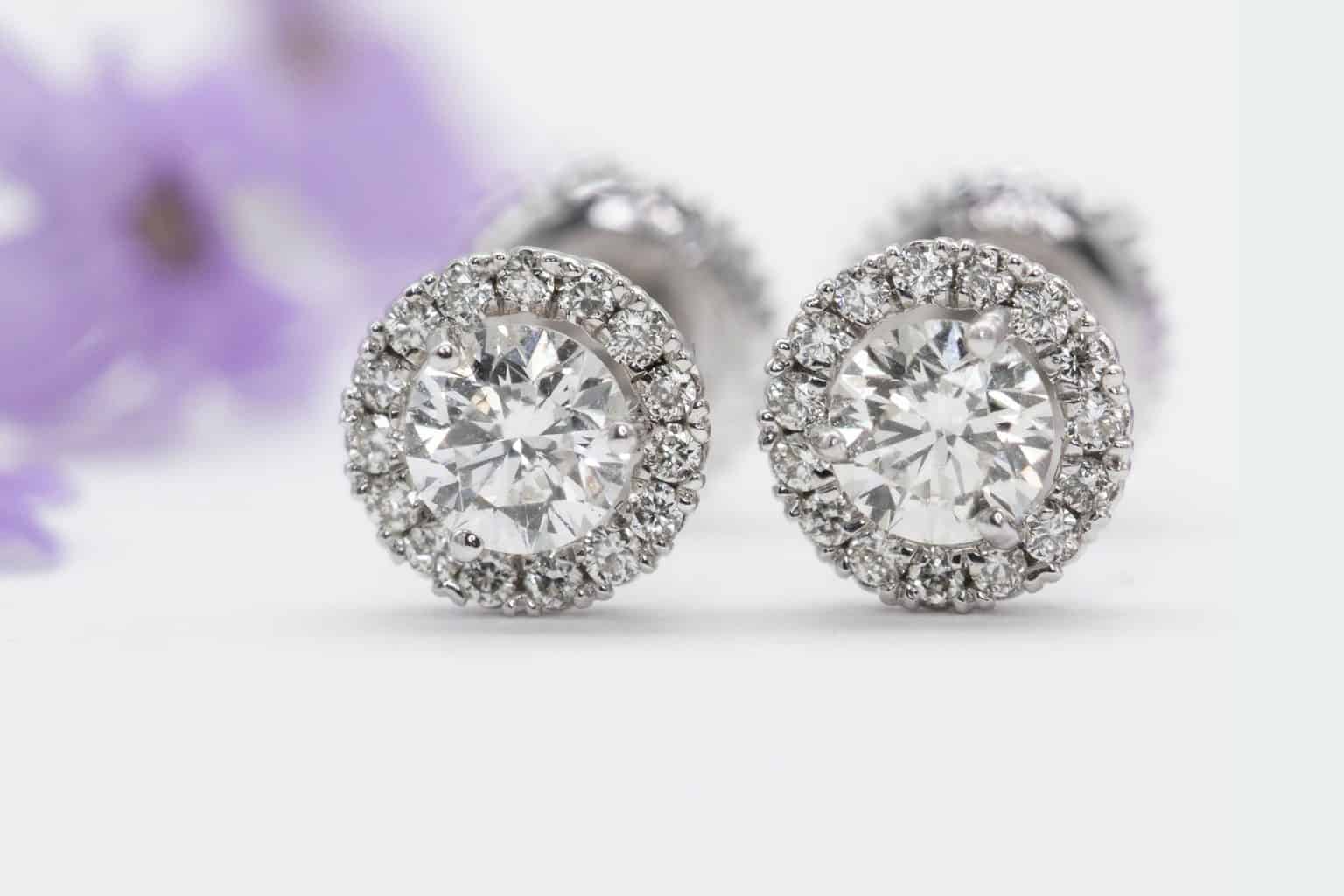You may have just got engaged and want earrings to match your ring, or you might be looking for a nice pair of earrings just because. Whichever your reasons for choosing diamond studs, you will have to take the usual precautions needed when you buy diamonds, as well as take into account these other factors.

Budgetary Concerns
Decide how much you can afford to spend on the earrings before you commit to getting them. Luckily you have plenty of options to choose from that will alter the price point. For example, with gold diamond earrings, you can typically choose between 14 or 18-karat gold, depending on your budget. However, If they are very expensive, and you will lose a substantial amount of your savings and investments should they get lost or stolen, arrange for insurance before you even leave the jeweller!
Carat or Half-Carat?
When earrings are advertised as ‘one-carat diamond studs’, the one carat is the total carat weight of both earrings, so one earring will contain a half-carat stone. This is quite standard and will be familiar to anyone used to buying diamonds, but if you are unsure, ask your jeweller, and they will explain it to you clearly, so you know exactly what you are getting for your money.
Shape, Size and Cut
Diamond studs can use many of the diamond cuts and shapes that are used in diamond rings: princess cut, round brilliant, cushion cut, marquise, emerald and pear cut are all featured in studs as well as in rings. If you are customizing your earrings, ask to see any unusual cuts that they might have – but do remember that they must be paired and if asymmetrical, they will need to be a mirror image in order to look good. When creating any custom jewellery, the jeweller will need to create a balanced and aesthetically pleasing look; by working with a skilled jeweller, particularly those specializing in custom made jewellery in Melbourne, you can create a unique and personalized pair of diamond studs that perfectly suits your style and preferences.
Back to the Safety
Most earring wearers have experienced the little lurch of annoyance when we realize that we have lost an earring because the butterfly back has got caught in our hair, snagged on a piece of clothing, or just worked its way loose. If you are lucky, you hear it go pinging off the mirror and can track it down; if not, you tend to be left with a single earring that you cannot really wear but do not want to throw away… just in case it partner turns up in the end!
High-end jewellery makers get around this by using specialist backs that do not weaken and loosen over time, as butterfly clasps are prone to doing. Instead, they make diamond stud earrings with screw threads on the earring shaft and a tiny butterfly-like fastener that must be physically screwed along the thread until it is holding the earring firmly in place. A ‘stopper’ can be used after this to prevent the screw butterfly from working backwards along the shaft and falling off.
Locking backs are similar. They are visually quite like regular butterfly backs, if somewhat bulkier. Still, they grip the shaft tightly, locking in place until squeezed to release the locking mechanism, at which point they slide off the earring shaft so you can change your earrings or remove them.
A final point to make your diamond studs look their best at all times. Ensure the earring backs are big enough to prevent your studs from dropping or hanging awkwardly off your ears. This does not mean wearing the backs punishingly tight; instead, it simply means that the earring requires a broader back to support the stud’s size, weight or shape.


